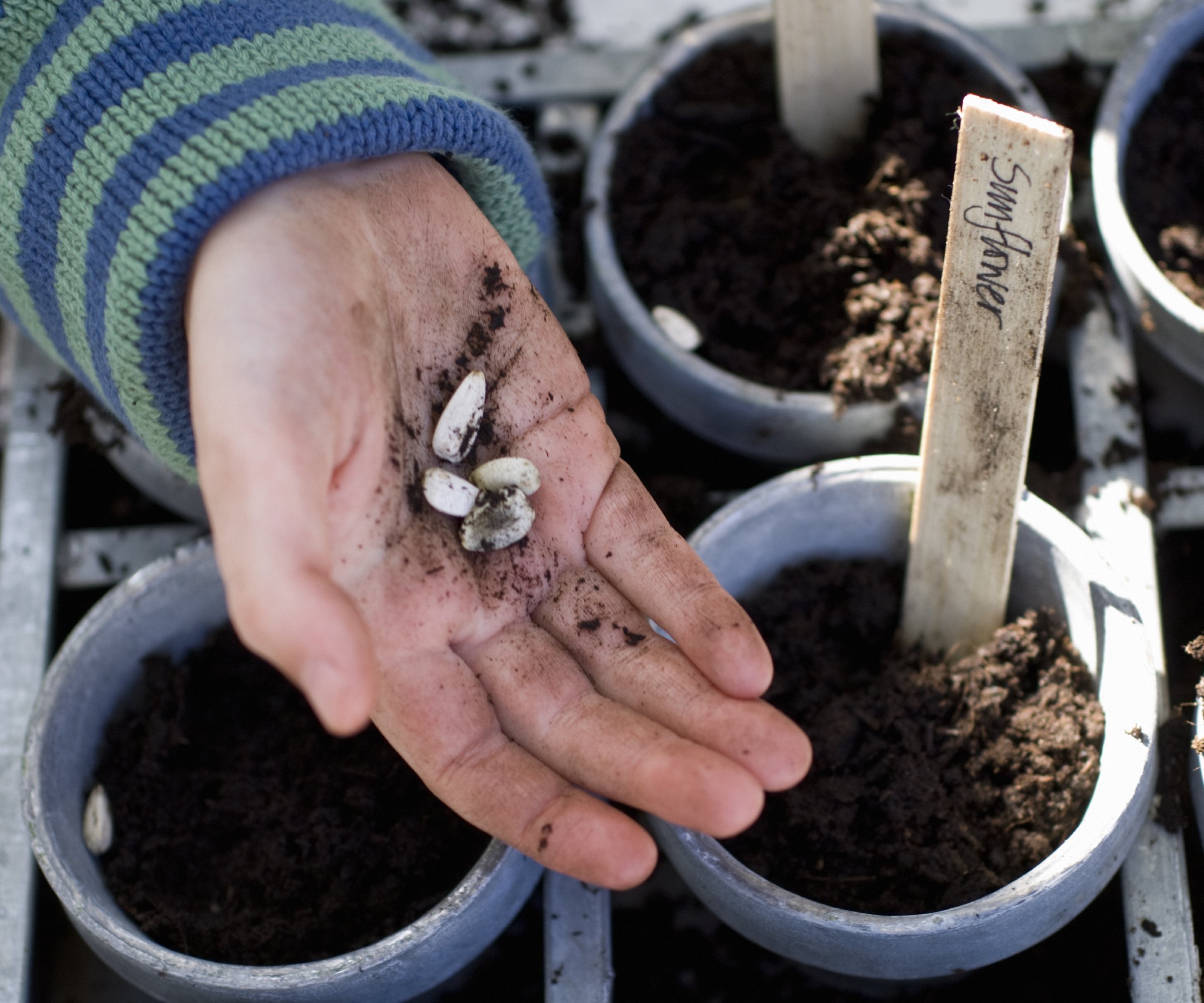Sunflowers are one of the most cheerful and rewarding plants to grow. Their bright, golden blooms not only add beauty to your garden but also attract pollinators and can even provide edible seeds. Whether you’re a beginner gardener or looking for a fun project with kids, this guide will show you how to plant sunflower seeds easily and help them thrive from seed to full bloom.🌞 IntroductionSunflowers are known for their tall, sturdy stems and vibrant yellow flowers that seem to follow the sun. Growing sunflowers from seeds is simple, requires minimal tools, and gives a huge sense of satisfaction.This guide breaks down how to plant sunflower seeds step by step, from selecting the right variety to caring for your plants throughout the growing season.🌱 Choosing the Right Sunflower SeedsBefore planting, it’s important to select a sunflower variety that suits your space and purpose:Giant varieties (like ‘Mammoth’): Tall and perfect for a backyard garden.Dwarf varieties (like ‘Teddy Bear’ or ‘Sunspot’): Compact and ideal for small gardens or containers.Decorative varieties (like ‘Autumn Beauty’): Multi-colored petals for a unique garden display.Edible seed varieties: Best if you plan to harvest seeds for snacks.🌿 Tip: Check the days to maturity on the seed packet — most sunflowers bloom 70–100 days after planting.🧑🌾 Step 1: Pick the Perfect LocationSunflowers thrive in full sunlight, so choose a spot that receives 6–8 hours of direct sunlight daily. They also prefer:Well-draining soil to prevent root rot.Slightly acidic to neutral soil (pH 6.0–7.5).Protection from strong winds, especially for taller varieties.🌱 Step 2: Prepare the SoilClear the area of weeds, rocks, and debris.Loosen the soil to about 12 inches deep for strong root development.Mix in compost or organic fertilizer to provide nutrients for healthy growth.🌿 Tip: Sunflowers are heavy feeders, so adding compost ensures robust blooms and taller stems.🌻 Step 3: Plant the SeedsTiming: Plant seeds after the last frost date in your region.Spacing:Giant sunflowers: 12–18 inches apartDwarf varieties: 6–12 inches apartDepth: Sow seeds 1–2 inches deep in the soil.Orientation: Plant seeds pointy end down for optimal germination.Water gently but thoroughly after planting.💧 Step 4: Watering and CareSunflowers are relatively drought-tolerant once established, but proper watering is key in the early stages:Keep soil moist but not soggy until seedlings emerge (usually 7–10 days).After seedlings develop, water once or twice a week, depending on rainfall.Mulch around the base to retain moisture and prevent weeds.🌿 Step 5: Supporting Your SunflowersTall sunflower varieties may need support to prevent bending or breaking:Use stakes or garden twine for taller plants.Plant in groups to allow mutual support from neighboring sunflowers.Prune any weak or damaged stems to maintain strength.🌼 Step 6: FertilizingApply a balanced, slow-release fertilizer when seedlings are 6 inches tall.For larger sunflowers, consider a high-phosphorus fertilizer to encourage blooms.Avoid over-fertilizing nitrogen — it promotes leaf growth but fewer flowers.🌻 Step 7: Dealing With Pests and ProblemsCommon pests include:Aphids: Spray with a mild soapy solution.Birds: Cover young seedlings with netting until they grow strong.Powdery mildew: Ensure proper spacing for airflow and avoid wetting leaves.🌿 Tip: Companion planting with marigolds or nasturtiums can help deter pests naturally.🌞 Step 8: Harvesting Sunflower SeedsFor edible seeds, wait until the flower head turns brown and droops.Cut the head and hang it upside down in a dry, ventilated area.Rub seeds gently to remove from the flower head.Store seeds in an airtight container for later use.🌻 Fun Tips for a Successful Sunflower GardenSuccession Planting: Plant seeds every 2–3 weeks for continuous blooms.Companion Plants: Sunflowers attract bees, which can help other plants like tomatoes and peppers.Container Planting: Dwarf sunflowers thrive in pots on patios or balconies.Creative Arrangements: Plant in rows, spirals, or clusters for visual interest.Photography & Decor: Sunflowers make fantastic backdrops for garden photos and DIY bouquets.🌼 Why You’ll Love Growing SunflowersEasy and rewarding: Perfect for beginner gardeners.Fast-growing: Most varieties bloom within 2–3 months.Pollinator-friendly: Attracts bees, butterflies, and birds.Edible seeds: Harvest your own snack or use for baking.Bright and cheerful: Adds instant color and positivity to any garden.🌞 ConclusionGrowing sunflowers is simple, fun, and incredibly satisfying. By following this guide on how to plant sunflower seeds, you’ll enjoy a vibrant, flourishing garden full of cheerful blooms. From choosing the right seeds to caring for your plants and harvesting seeds, every step is easy and rewarding.So grab your seeds, prepare your soil, and start planting — your sunny garden paradise awaits! 🌻✨

